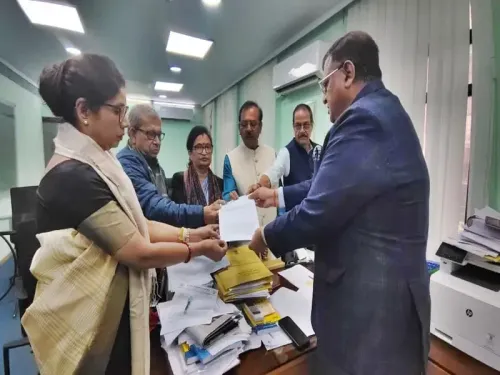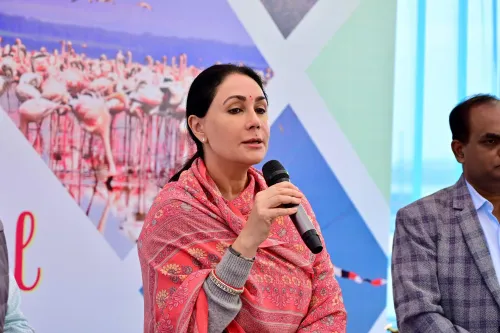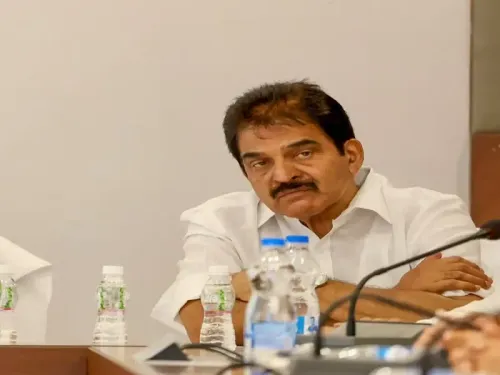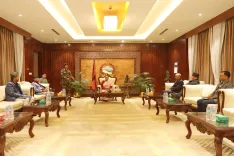Will All Unconnected Habitations Be Linked to National Highways with Double-Lane Roads by Tripura CM?
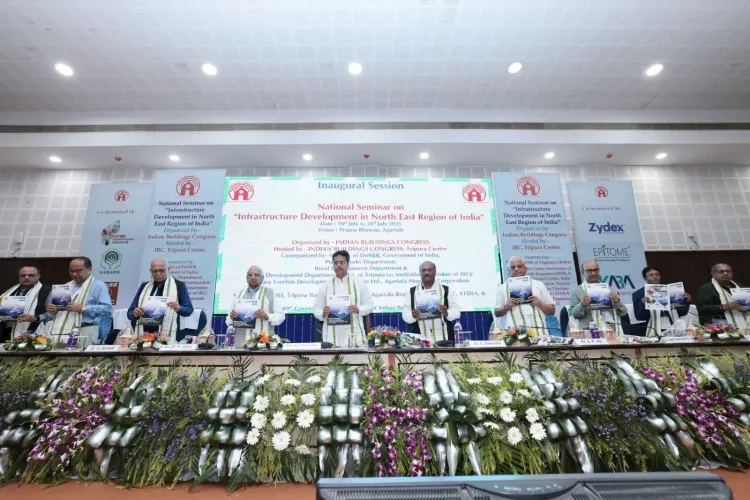
Synopsis
Key Takeaways
- Connecting unconnected habitations to national highways.
- Proposed 449 km ring road for Agartala.
- Over Rs 7,000 crore allocated for infrastructure development.
- Focus on double-lane roads and improved connectivity.
- Light House Project aimed at low-income housing.
Agartala, July 18 (NationPress) Tripura's Chief Minister, Manik Saha, announced on Friday that every district headquarters, subdivision headquarters, and unconnected habitations will be integrated with the national highways through double-lane roads.
Additionally, a 449 km ring road is proposed for Agartala city under the Bharatmala scheme, initiated by the Ministry of Road Transport and Highways.
During a seminar on Infrastructure Development in Northeast India at Pragna Bhavan, he highlighted that in the past seven years, the state government has launched various transformative initiatives significantly impacting the region's socio-economic environment.
“Infrastructure is the backbone of growth. It is universally acknowledged as a crucial factor for any state or region. It supports the primary sector, industries, services, skill development, and social empowerment,” stated Saha, who also oversees the Public Works Department. He emphasized that physical infrastructure, such as roads, airports, highways, power projects, water supply, and urban facilities, is essential for the growth of the northeastern region.
He referenced Prime Minister Narendra Modi, who, during the Northeast Rising Summit 2025 in New Delhi on May 23, referred to the northeast as Ashtalakshmi, symbolizing its eight states. Saha commended the establishment of the Ministry of DoNER (Development of North Eastern Region) as a critical step for the region's overall advancement.
“The northeastern region, often termed as India’s powerhouse, possesses vast potential in hydropower, petroleum, and gas. This region is pivotal in achieving India's clean energy goals. The strategic location of Tripura and other northeastern states between Bangladesh and Southeast Asia positions them as a gateway. The Tripura government prioritizes infrastructure development,” he said.
Saha highlighted that more than Rs 7,000 crore has been allocated in this year's (2025-26) budget for state infrastructure projects.
“Tripura has an extensive road network of approximately 10,618.423 km, which includes 1,057 km of state highways, 171 km of major district roads, 483 km of other district roads, 1,167 km of urban roads, and 7,740 km of village roads. The national highway network spans about 923 km, with four additional highways planned for around 229 km. As of 2025, around 509 km of national highways have been upgraded to double-lane roads with paved shoulders. We aim to enhance 1,057 km of state highways into double-lane roads with paved shoulders in phases,” Saha stated.
He also mentioned that the Light House Project, aimed at providing housing for low-income groups, is nearing completion. “We are constructing the Unity Mall and several high-rise buildings for various departments. This is part of our commitment to advancing infrastructure in Tripura to align the Northeastern region with the rest of the country,” he added.
The seminar was also attended by O.P. Goel, founder president of the Indian Building Congress, and Chinmay Debnath, president of the Indian Building Congress, among others.


